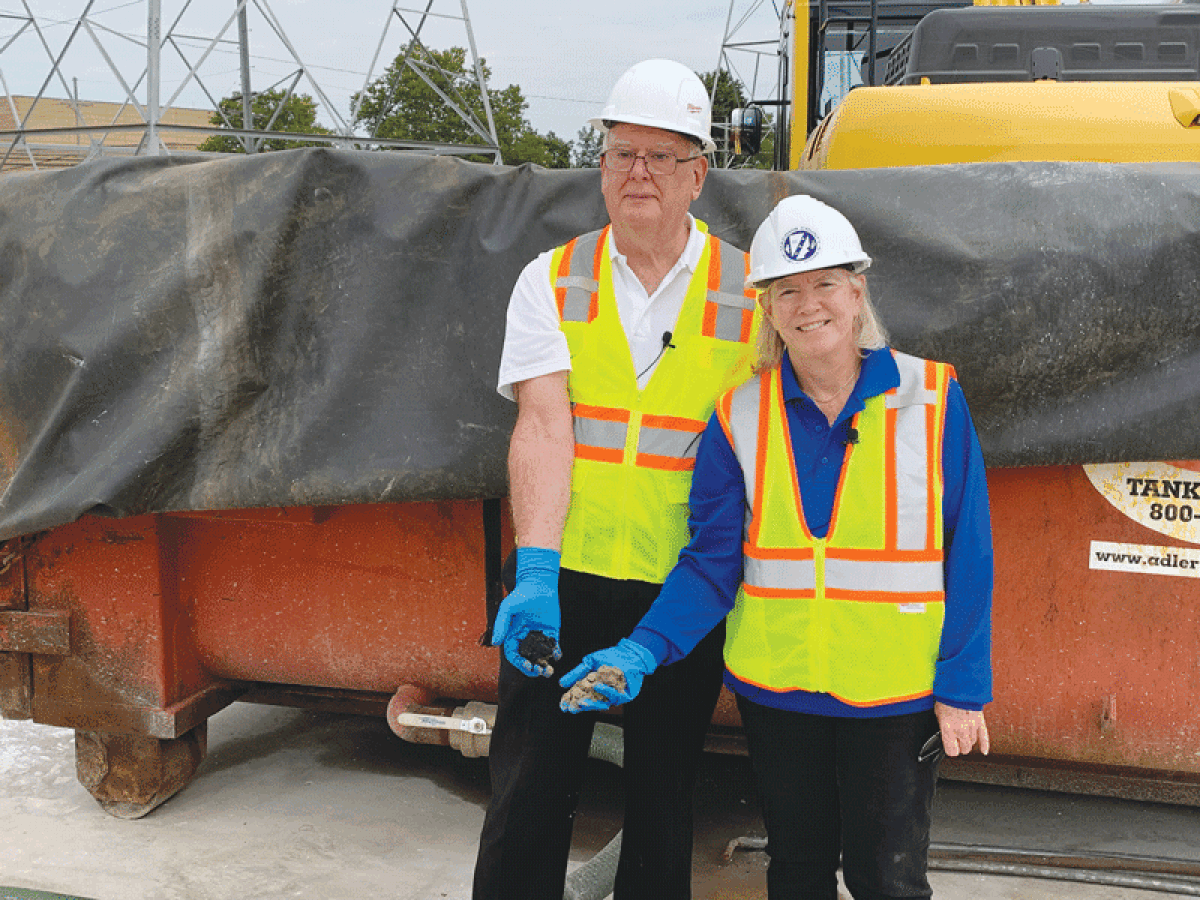STERLING HEIGHTS/FRASER — Approximately 6,000 tons of sediment is being removed from a major sewer in Macomb County, the Macomb Interceptor Drain.
The buildup of sediment is located in the 11-foot-diameter concrete pipe, which is approximately 60 feet below the surface. The removal is occurring below 15 Mile Road, at the end of the 7,000-foot-long stretch of concrete pipe, near Hayes Road, both in Sterling Heights. Officials said that the blockage was largely caused by a sinkhole in Fraser that took place on Christmas Eve in 2016, following the collapse of the interceptor beneath 15 Mile Road at Eberlein Drive.
“Six thousand tons of this in our interceptor reduces the amount of capacity that we have for our sewage flow. It has to come out,” Macomb County Public Works Commissioner Candice S. Miller said in a press release. “It’s a big part of the project — a very important part.”
The line runs from Sterling Heights, through Fraser and Clinton Township. Other sewer lines also flow into the Macomb Interceptor Drain, with the line ending at the Clintondale Pump Station, near the border of Clinton Township and Harrison Township.
Vehicle access to all businesses where the work is being done will be maintained. There will be no closures along 15 Mile Road due to the project. At 15 Mile Road and Garfield Road, there are some individual lane closures due to an ongoing, separate project in the Macomb Interceptor Drain District.
The cost of the project is estimated at $37 million. The project was given priority because failing to address it could cause this major sewer line to collapse due to the blockage restricting sewage flow in the pipe.
Workers have thus far scooped and removed approximately 1,000 tons of sediment from the Macomb Interceptor Drain. Another 5,000 tons is still to be taken out from the pipe, which carries the sanitary sewage from almost 600,000 residents in 11 of Macomb County’s communities.
To allow the removal, several days each week, sewage is temporarily held upstream to allow for sufficient space inside the pipe for the construction contractor to drive a bulldozer-like rig — known as a “skid-steer” — with a curved blade into the pipe and scoop the black, sandy debris from the pipe and into large bucket. Using a crane, that bucket is then slowly hoisted up through the new pump station that was built in the shaft and then dumped into a large roll-off dumpster.
The presence of sediment was previously noted during inspections of the large pipe and therefore was not a surprise. In some areas, the sediment is 24-36 inches thick.
Macomb County Commissioner Don VanSyckel, who serves on the Macomb Interceptor Drain Drainage District Board, said he was impressed by the construction project after getting a closeup look at the sediment removal process.
“I’m just so glad to help serve on the MIDD Drain board and help to push this project along because it’s high time it gets done,” VanSyckel said in a press release.
 Publication select ▼
Publication select ▼



















